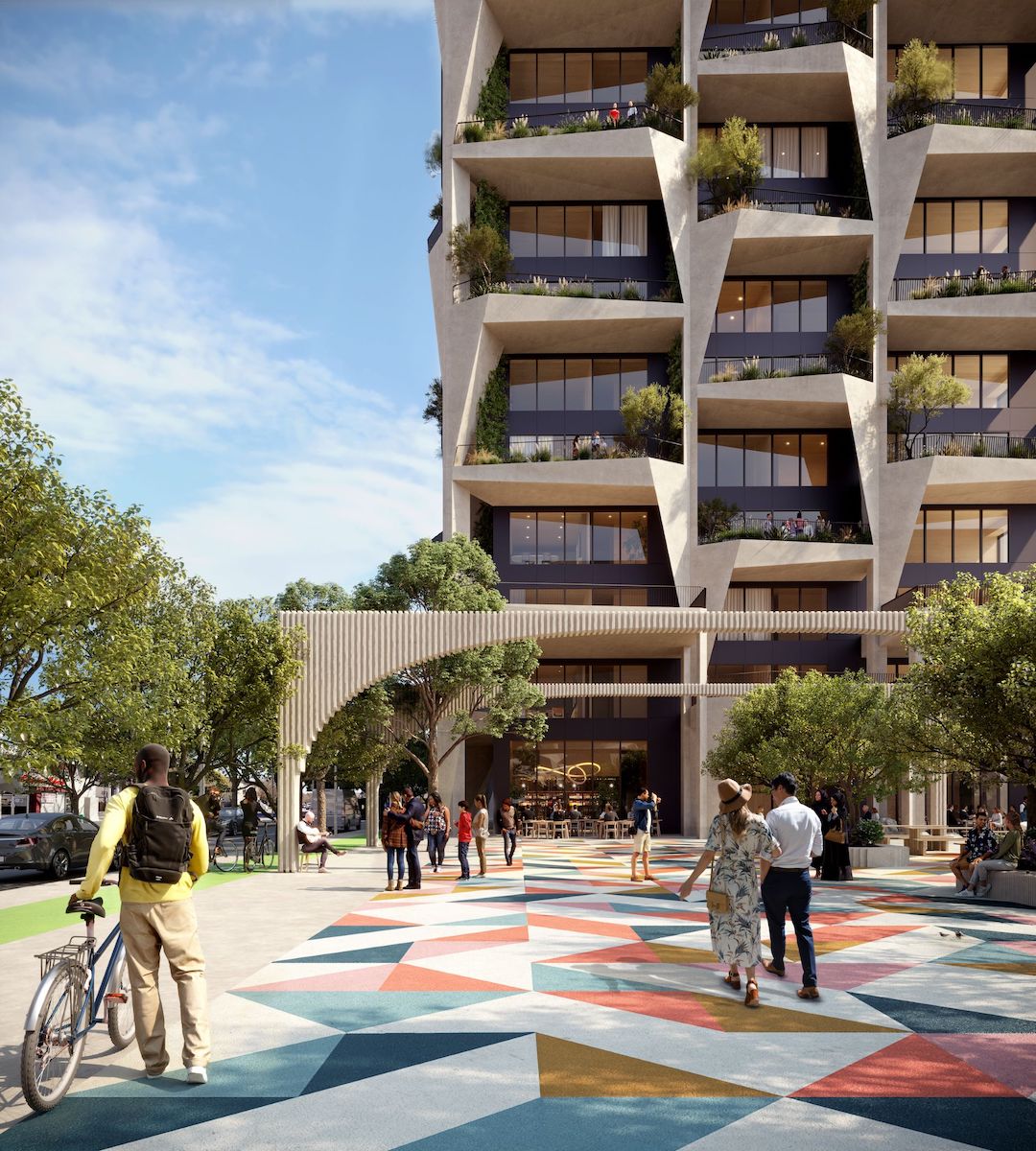Nabr, a first-of-its-kind residential development company co-founded by Bjarke Ingels, Toni Bahar, and Nicholas Chim, is hoping to reimagine the future of urban living by offering personalized, sustainable urban homes that will be co-designed with each resident.
The “people-first” company has a five-step process that allows residents to purchase and customize their homes. The first step is to join the waitlist and answer a short questionnaire explaining any needs or desires for the home. When an apartment becomes available, Nabr will reach out to move forward to the next step.
Step two is to customize the home. Buyers will receive an invite to Nabr’s Design Studio to select and customize the home from a curated list of layouts, interiors, and optional upgrades. Step three allows buyers to choose their path to ownership. Buyers can buy upfront or qualify for Nabr’s LEAP program to lock in the purchase price on day one while paying a monthly lease and earning credits toward the home purchase. Step four sees buyers reserving the home with a $1,000 refundable reservation fee, and step 5 is to officially pre-order the home with a non-refundable deposit as low as 1% of the home’s purchase price.

SoFa One, located in downtown San Jose, will be the company’s first development. It will include 125 personalized, sustainable homes in studio, one-, two-, and three-bedroom+ layouts. SoFa One, as well as all subsequent Nabr developments, will feature View Smart Windows. View Smart Windows automatically adjust to provide continuous access to natural light and outdoor views while minimizing heat and glare. The windows reduce energy consumption for cooling and lighting by up to 20%. Nabr developments will also use View’s cloud-connected smart building network, View Net, to power all connected products such as smart locks, access controls, air quality sensors, smart thermostats, and parking.
Prices for SoFa One apartments will start in the high $700Ks. The development is expected to break ground in summer 2022 with occupancy expected by summer 2023.
Related Stories
| Nov 7, 2014
Prefab helps Valparaiso student residence project meet an ambitious deadline
Few colleges or universities have embraced prefabrication more wholeheartedly than Valparaiso (Ind.) University. The Lutheran-based institution completed a $27 million residence hall this past summer in which the structural elements were all precast.
| Nov 3, 2014
Novel 'self-climbing' elevator operates during construction of high-rise buildings
The JumpLift system from KONE uses a mobile machine room that moves upward as the construction progresses, speeding construction of tall towers.
| Nov 3, 2014
Cairo's ultra-green mixed-use development will be topped with flowing solar canopy
The solar canopy will shade green rooftop terraces and sky villas atop the nine-story structure.
| Oct 31, 2014
Dubai plans world’s next tallest towers
Emaar Properties has unveiled plans for a new project containing two towers that will top the charts in height, making them the world’s tallest towers once completed.
| Oct 29, 2014
Better guidance for appraising green buildings is steadily emerging
The Appraisal Foundation is striving to improve appraisers’ understanding of green valuation.
| Oct 27, 2014
Studio Gang Architects designs residential tower with exoskeleton-like exterior for Miami
Jeanne Gang's design reinvents the Florida room with shaded, asymmetrical balconies.
| Oct 21, 2014
Passive House concept gains momentum in apartment design
Passive House, an ultra-efficient building standard that originated in Germany, has been used for single-family homes since its inception in 1990. Only recently has the concept made its way into the U.S. commercial buildings market.
| Oct 21, 2014
Perkins Eastman white paper explores state of the senior living industry in the Carolinas
Among the experts interviewed for the white paper, there was a general consensus that the model for continuing-care retirement communities is changing, driven by both the changing consumers and more prevalent global interest on the effects of aging.
| Oct 16, 2014
Perkins+Will white paper examines alternatives to flame retardant building materials
The white paper includes a list of 193 flame retardants, including 29 discovered in building and household products, 50 found in the indoor environment, and 33 in human blood, milk, and tissues.
| Oct 15, 2014
Harvard launches ‘design-centric’ center for green buildings and cities
The impetus behind Harvard's Center for Green Buildings and Cities is what the design school’s dean, Mohsen Mostafavi, describes as a “rapidly urbanizing global economy,” in which cities are building new structures “on a massive scale.”
















